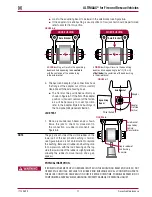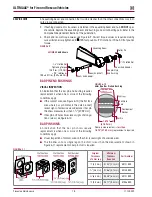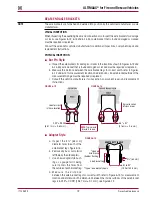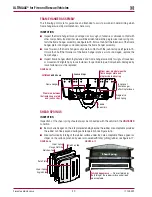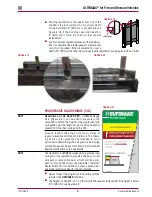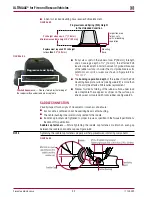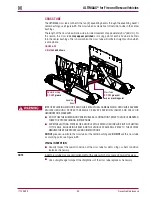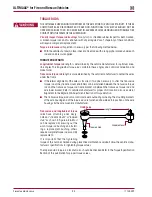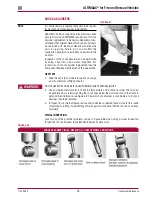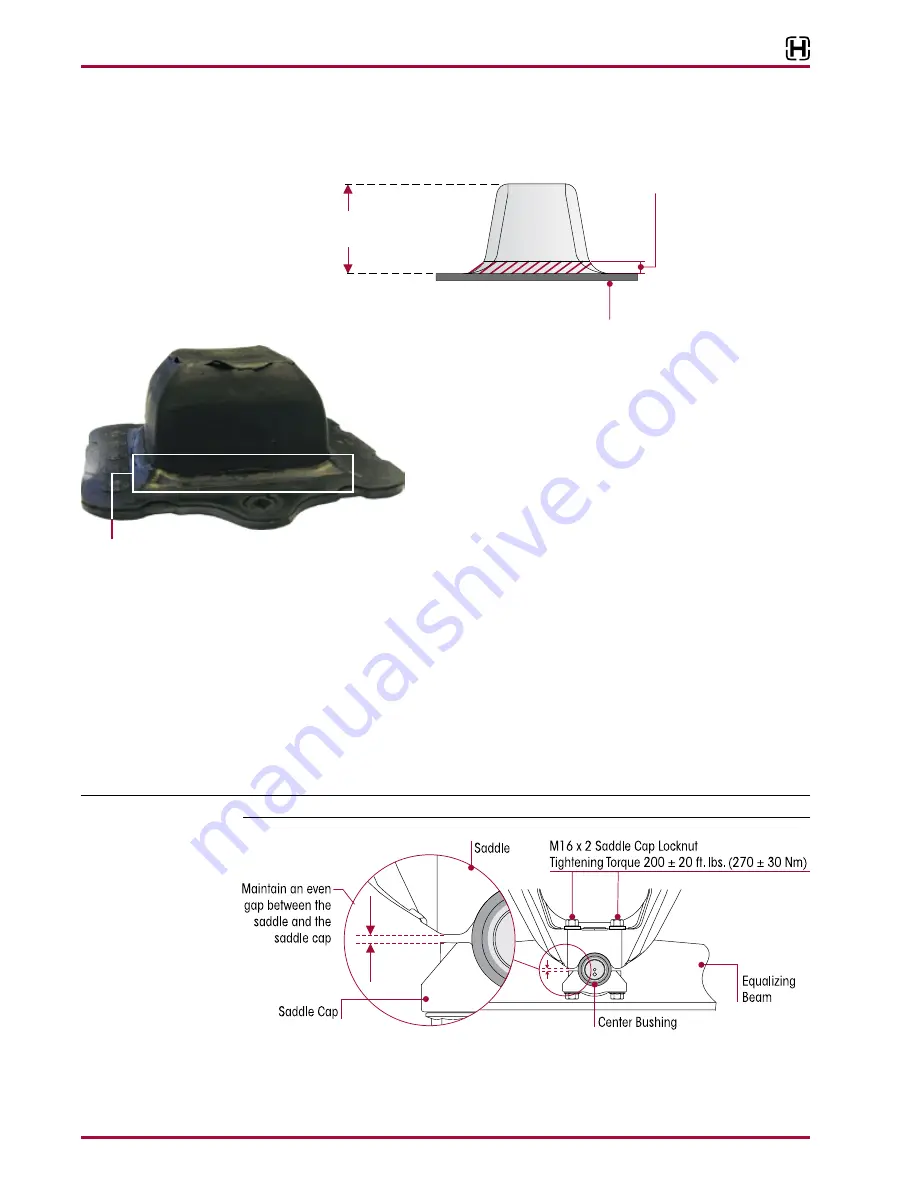
Preventive Maintenance
22
17730-299
ULTIMAAX
®
for Fire and Rescue Vehicles
■
A bent or cracked mounting base requires PLS replacement .
FIGURE 6-22
FIGURE 6-23
■
If any cuts or splits in the rubber of over 2" (50 mm) in length
and an average depth of ½" (13 mm), the effected PLS
requires replacement . A certain amount of gradual breakup
of the rubber surface is normal . The most probable areas for
potential cuts, splits, or wear are shown in Figure 6-22 as
“
/ / / / / / /
.”
■
The
bonding
separation
depth
of the rubber from the PLS
mounting base plate surface (see Figure 6-22) is more than
½" (13 mm), the effected PLS requires replacement .
■
Creases formed by folding of the rubber surface under load
are acceptable . These appear as stripes on the surface, pol-
ished by wear or covered with tacky rubber, see Figure 6-23 .
SADDLE CONNECTION
Visually inspect for any signs of movement or looseness and ensure:
■
Each saddle is centered on each equalizing beam center bushing .
■
The center bushing inner metal is fully seated to the saddle .
■
Saddle cap locknuts are tightened to proper torque as specified in the Torque Specifications
Section of this publication .
Saddle cap fasteners
— While tightening the saddle cap fasteners maintain an even gap
between the saddle and saddle cap, see Figure 6-24 .
NOTE
Tightening the saddle cap fasteners properly will help prevent wear of mating components .
FIGURE 6-24
PLS height when new 3.1" (78 mm)
Minimum acceptable height 2.3" (59 mm)
Replacement required if PLS height
is less than
2.3" (59 mm)
Progressive Load Spring (PLS) Height
in the Unloaded Condition
Inspection area
for any cuts,
splits, or bonding
separation
Mounting
Base
Progressive Load Spring
Polished Appearance
—
Creases formed by the folding of
the rubber surface under load are acceptable.










